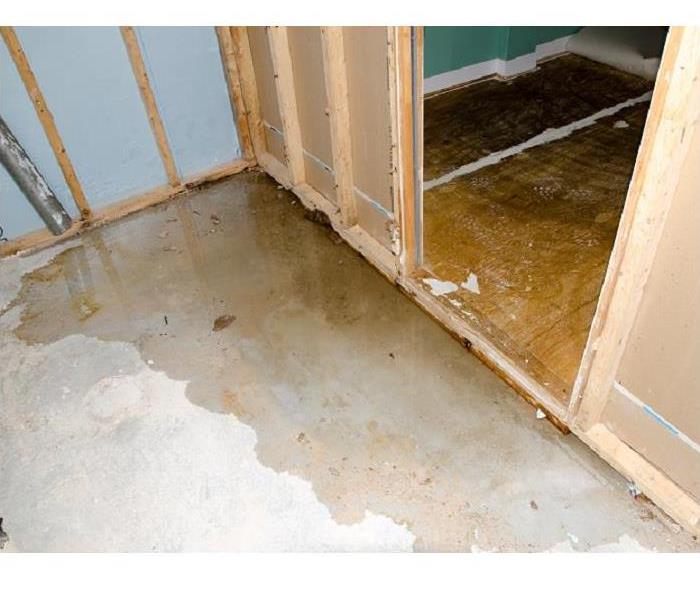Concrete Solutions for Drying Cement in Portsmouth
6/26/2019 (Permalink)
Flood Damage Technicians In Portsmouth Explain How To Dry Out Concrete
This spring season much of the country has seen an elevated amount of severe weather meaning that the Portsmouth area could be the victim of thunderstorms throughout the summer season. If there are large amounts of rainfall, there is a chance that your residence could become the victim of excessive flood damage. Once the water starts to build up outside, it is possible that rainwater can find its way into your dwelling. Wet structural components and other materials can cause the relative humidity level inside your house to rise. When the indoor humidity level is high inside your home, other items become at risk of receiving secondary flood damage.
During flooding situations, exterior walls can often become the first part of your building that gets impacted. When mitigating flood damage in Portsmouth, our water restoration technicians or WRTs at SERVPRO work towards eliminating moisture as soon as possible so that secondary issues do not arise. The first stage of mitigation usually involves extracting the water while it is still liquid. Once all standing water and moisture inside your porous materials like carpet get removed, our next step is the applied structural drying or ASD phase.
During ASD our SERVPRO WRTs utilize advanced technology and specialized equipment to create an environment that is conducive to rapid structural drying. Most of the time, we can accomplish this by setting up a combination of air movers and dehumidifiers. However, in some cases, when we are dealing with certain types of materials, we must take other measures to dry out your contents or building materials after flooding.
Concrete is a non-porous substance, but once it does get wet, the items can be challenging to dry out. Some houses contain cinder block or concrete exterior walls that can hold moisture on the inside. When dealing with cinder block walls, we often drill holes in a mortar joint towards the bottom of the wall to drain water out of the wall cavity. We can also set up desiccant dehumidifiers to help pull moisture out of the concrete materials.
If you ever suffer damage after your neighborhood floods, call SERVPRO of The Seacoast at (603) 433-4300 any day of the week.
More about Portsmouth.






 24/7 Emergency Service
24/7 Emergency Service